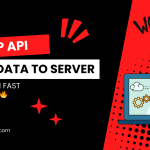The Best Fluffy Pancakes recipe you will fall in love with. Full of tips and tricks to help you make the best pancakes.
Introduction
Edge computing has emerged as a critical technology in the realm of IoT, allowing for real-time data processing and decision-making at the edge of the network. By moving computation closer to the data source, edge computing minimizes latency, enhances data security, and reduces the need to transfer massive amounts of data to centralized cloud servers.
Understanding Edge Computing in IoT
Traditional IoT architectures involve collecting data from sensors or devices and transmitting it to a centralized cloud server for processing and analysis. However, this approach can lead to delays in decision-making due to data having to travel back and forth between the edge devices and the cloud.
Edge computing addresses this challenge by distributing computation and data storage closer to the edge devices themselves. This enables real-time processing of data on-site, allowing for immediate insights and actions to be taken based on the incoming data.
Benefits of Edge Computing for Real-Time IoT Data Processing
1. Reduced Latency: By processing data at the edge, latency is minimized, ensuring that critical decisions can be made instantaneously.
2. Enhanced Security: Keeping sensitive data at the edge helps to reduce the risk of data breaches or cyber-attacks during data transmission to the cloud.
3. Bandwidth Optimization: Edge computing reduces the need to constantly transfer large volumes of data to the cloud, optimizing network bandwidth and reducing costs.
Technical Components of Edge Computing in IoT
Edge computing involves a network of edge devices or gateways that perform computation and data processing tasks. These devices are equipped with processing power, memory, and sometimes AI capabilities to analyze and act on data in real-time.
Key components of an edge computing system include:
- Edge Devices: Sensors, actuators, and other IoT devices that collect data.
- Edge Gateways: Intermediate devices that aggregate and preprocess data before sending it to the cloud or data center.
- Edge Servers: Servers located close to the edge devices that perform computation and storage tasks.
Use Cases of Edge Computing in IoT
Edge computing finds applications across various industries, including:
- Smart manufacturing for real-time monitoring and control of production processes.
- Smart cities for optimizing traffic management and public services.
- Healthcare for remote patient monitoring and personalized care.
- Retail for enhancing customer experiences through personalized recommendations.
Conclusion
Edge computing plays a pivotal role in enabling real-time data processing and decision-making in IoT applications. By leveraging the power of edge computing, organizations can unlock new possibilities for efficiency, security, and innovation in their IoT deployments.




